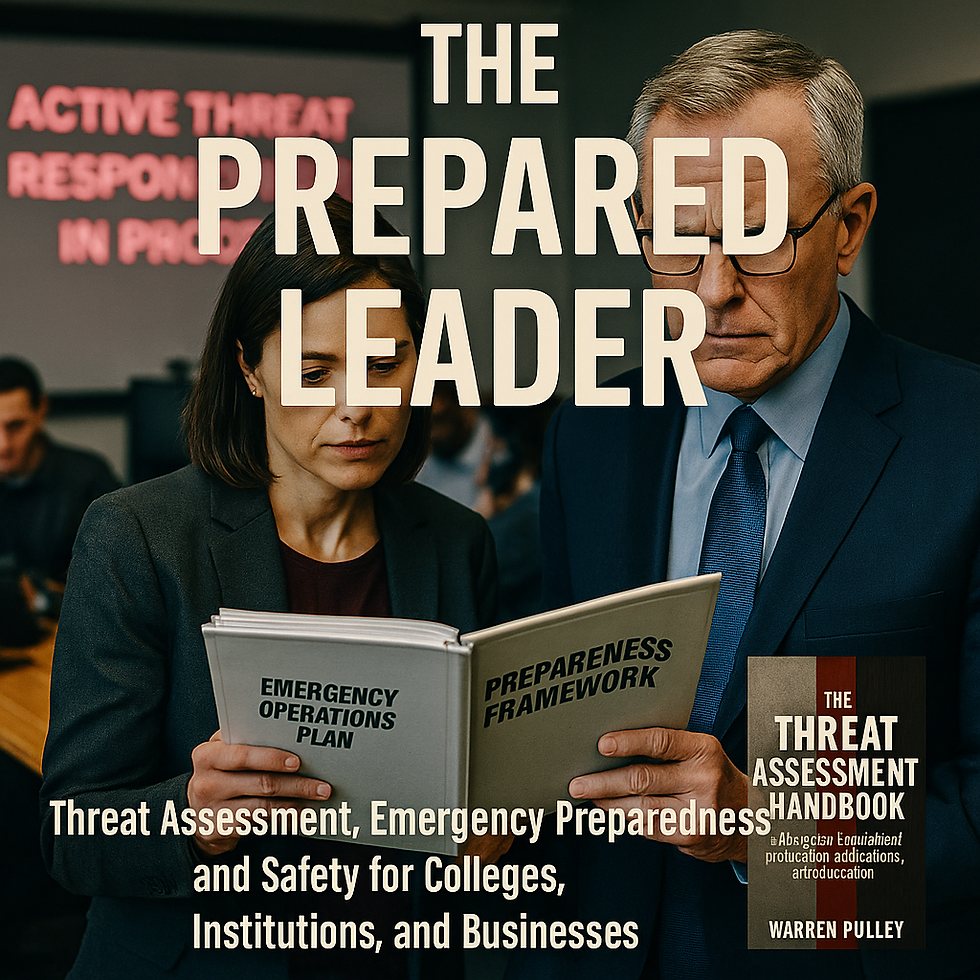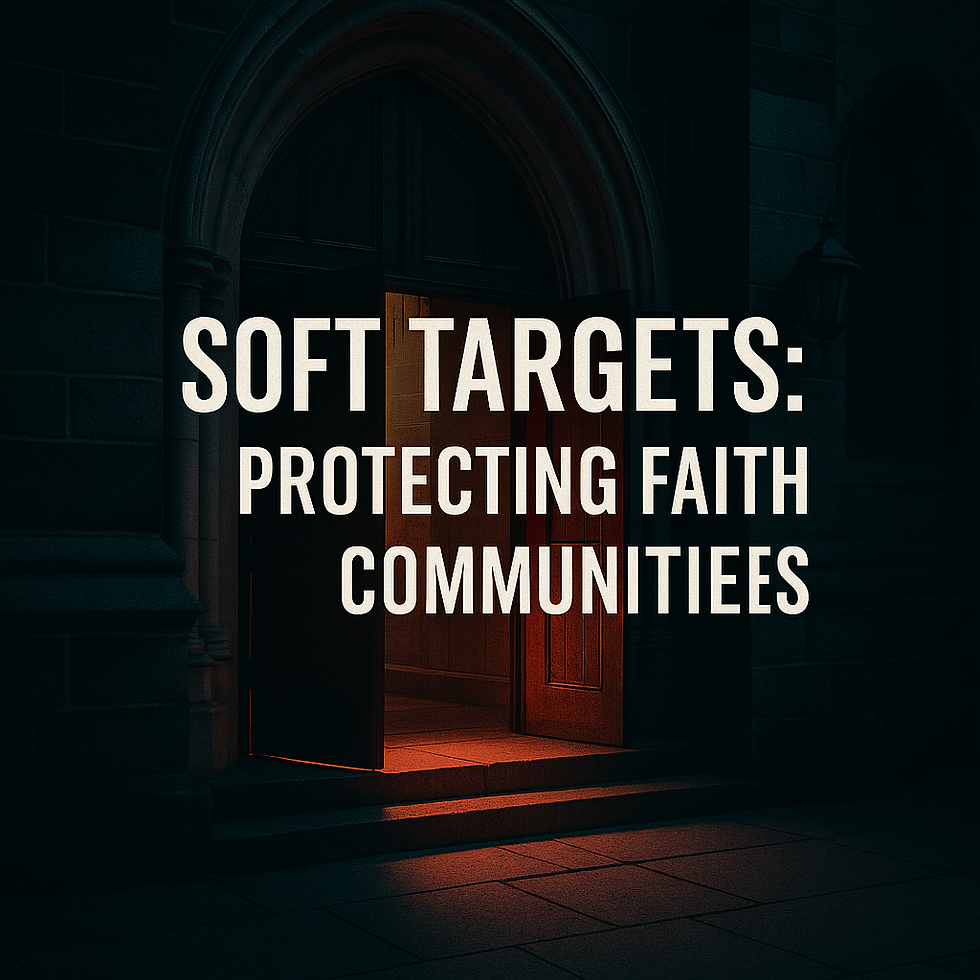The Prepared Leader: Moving From Hesitation to Preparation
- CrisisWire

- Sep 29
- 2 min read
When disaster strikes, leaders are not judged by what they knew but by what they did.
From active shooter incidents and cyberattacks to hurricanes and pandemics, today’s threats are faster, more complex, and more devastating than ever. Yet many universities, corporations, and government agencies remain dangerously unprepared.
In The Prepared Leader: Threat Assessment, Emergency Preparedness, and Safety for Colleges, Institutions, and Businesses, Warren Pulley — military veteran, former LAPD officer, government security contractor, and executive protection specialist — delivers a hands-on playbook for leaders who must move from hesitation to preparation.
The Problem: Why Institutions Remain Unprepared
Despite decades of active shooter events, natural disasters, and cyberattacks, most organizations continue to fail at readiness. The reasons include:
Emergency Operations Plans (EOPs) that are outdated, untested, or unused
Leaders who underestimate threats or dismiss warning signs
A culture of complacency that treats preparedness as paranoia
Gaps in communication that leave staff and students confused during crises
These failures leave institutions open to preventable tragedies.
Case Studies and Real-World Evidence
Active shooter events continue to expose the absence of working lockdown and notification protocols.
Cyberattacks on universities have shut down networks and endangered sensitive data for weeks.
Hurricanes and wildfires have displaced students and staff, revealing the fragility of continuity plans.
The COVID-19 pandemic demonstrated the cost of underestimating systemic threats.
Federal agencies such as FEMA, DHS, and the FBI continue to stress the importance of integrated, tested emergency preparedness systems.

Actionable Fixes from The Prepared Leader
Threat Identification and Prioritization Leaders must adopt a structured method to score and rank risks before they escalate.
Understanding the Psychology of Violence Training must help leaders and staff recognize behavioral red flags that precede violent acts.
Building and Testing Emergency Operations Plans (EOPs)Plans must go beyond paper. They require drills, updates, and integration with local law enforcement and emergency services.
Embedding Communication and Culture Preparedness must be lived daily through training, clear messaging, and a culture of vigilance.
Adopting Resilience as a Mindset True resilience is not a binder on a shelf. It is a culture of adaptability, readiness, and leadership ownership.
For detailed checklists, case studies, and planning frameworks, see The Prepared Leader.
Leadership Responsibility
Preparedness is not optional. It is responsibility in action. Leaders in universities, corporations, nonprofits, and government must acknowledge that hesitation is a liability.
As reinforced in The Threat Assessment Handbook, threat management and emergency planning are inseparable from leadership accountability. When leaders delay, institutions fail. When leaders prepare, communities survive.
Call to Action
Read The Prepared Leader: Threat Assessment, Emergency Preparedness, and Safety for Colleges, Institutions, and Businesses to equip yourself and your organization with the frameworks needed to withstand modern threats.
Contact CrisisWire at crisiswire@proton.me for customized threat assessments, continuity planning, and emergency operations guidance.
Follow CrisisWire:





Comments